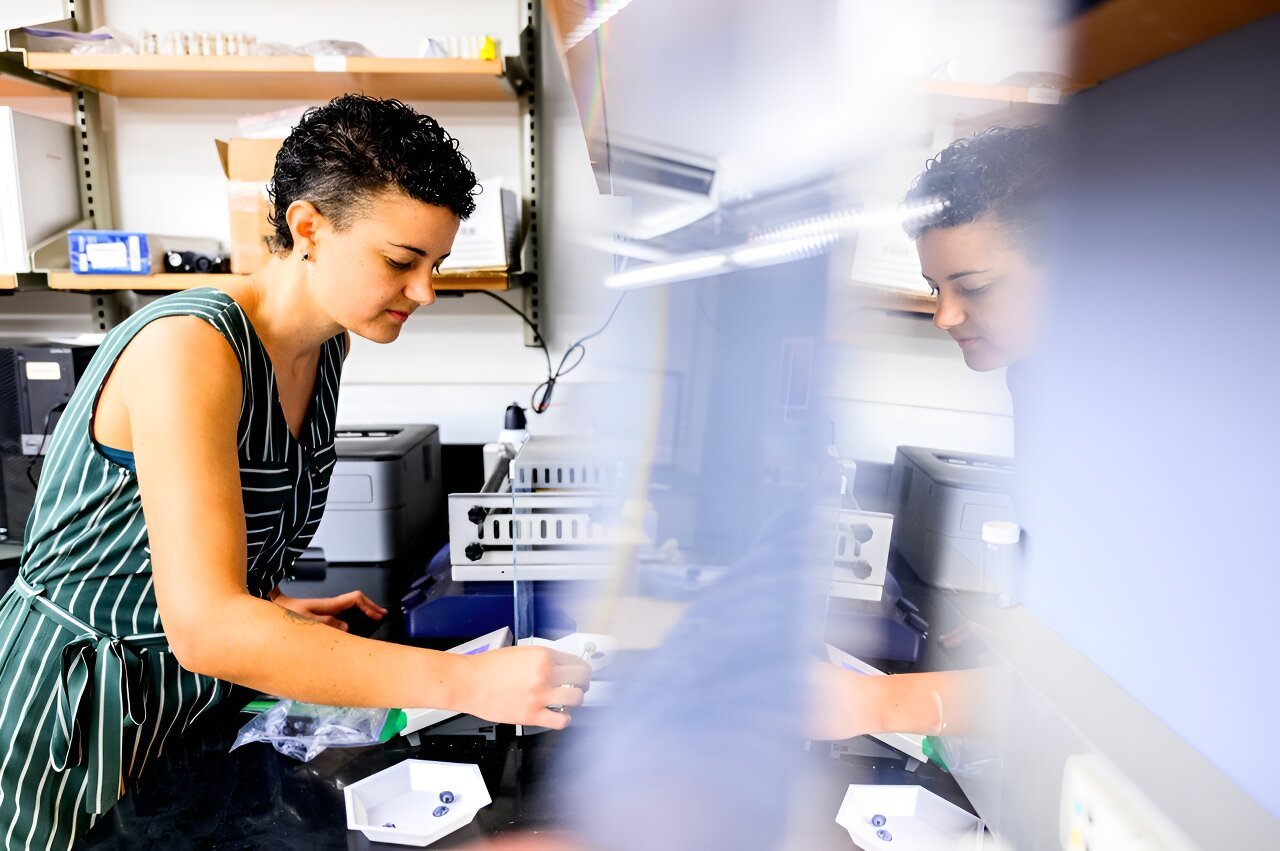
Northeastern University professor Gabriela Garcia studies the relationship between people and plants.
And it’s an often misunderstood relationship.
She’s especially interested in how decisions are made by farmers on small farms, which often operate on shoestring budgets with limited resources.
Why is she interested? Because, Garcia says, more than 80% of the world’s farms are small, operating on one to five acres. So the global food supply depends on them.
But, she says, outside the United States, most small farms don’t have agricultural insurance that protects them during low-yield years when revenues can drop by 70%.
“There’s all sorts of uncertainty,” Garcia says.
One phenomenon that contributes to low yields and has been largely overlooked, Garcia says, is something called “alternate bearing”—a pattern of fruit and nut trees producing high yields one year, followed by years of low yields.
In research published in One Earth, Garcia and her collaborators—including Northeastern’s Laura Kuhl—developed a framework for how to better understand the impact of alternate bearing, which they say is often overlooked in discussions of resilient farming.
They hope the research encourages others to join them in exploring the ecosystems of farms. And help study trees that produce things like apples, avocados, olives, pistachios and coffee.
“I’m really interested in, especially with the changing climate and environment, how we can align synergies between ecosystem function and farmers’ well-being for resilience,” Garcia says.
So what exactly causes alternate bearing?
“The plants overinvest their resources during the high-yielding years, and then they’re basically exhausted and depleted,” Garcia says. “Until they can recover, they won’t reproduce again.”
This can occur in one set of trees, but it can also spread to other trees, and eventually other farms, an entire growing region or even a whole country, which Garcia showed in her 2021 research.

“There is a really widespread assumption that we should just be able to manage it away, like it’s totally under a farmer’s control, and if you haven’t eliminated these fluctuations, it’s just poor management,” she says.
The evidence suggests, Garcia says, that it’s not easy to control alternate bearing.
“Therefore we should have better strategies to support their resilience, instead of just having farmers kind of weather these fluctuations of low-yielding years,” she says.
Environmental disturbances like droughts, pest outbreaks, warm winters and hurricanes—which are growing in frequency and intensity—can compound the impact of alternate bearing.
For example, if a tropical storm hits during a high-yield year and destroys a crop, a farm could experience several low-yield years in a row.
And that could affect the cost of goods, Garcia says, like it did for Brazilian coffee when low-production years led to prices spiking across the globe.
The goal of her research, Garcia says, is to raise awareness of the alternate bearing issue and to encourage more research on it.
“There is a pretty big knowledge gap,” she says. “We’re calling on folks to pay more attention to it and to advance a lot of these open questions.”
For instance, it is not clear how many consecutive crop failures a farmer can withstand before abandoning a farm.
In her research, Garcia offers several strategies that could help farmers mitigate alternate bearing, including the diversification of crops.
By planting high-value annual crops—such as tomatoes and legumes—alongside perennials, a farm could subsidize and stabilize its revenues, she says.
Developing insurance policies for farmers in countries that don’t offer them would be another important step, Garcia says.
In the end, she says, just accepting alternate bearing as a serious issue is an important step in pushing for things like government assistance, subsidies and incentives.
“Recognition that synchronous (alternate bearing) often persists despite farmer efforts to limit it—and that its interactions with extrinsic environmental shocks may be devastating for farmer livelihoods—is critical to supporting more just and resilient perennial crop systems,” she says.
More information:
Gabriela M. Garcia et al, Intrinsic yield fluctuations interact with environmental shocks to threaten the socio-ecological resilience of perennial crop systems, One Earth (2024). DOI: 10.1016/j.oneear.2024.07.007
Provided by
Northeastern University
This story is republished courtesy of Northeastern Global News news.northeastern.edu.
Citation:
Research sheds light on low crop yields and their impact on small farms (2024, August 26)
retrieved 26 August 2024
from https://phys.org/news/2024-08-crop-yields-impact-small-farms.html
This document is subject to copyright. Apart from any fair dealing for the purpose of private study or research, no
part may be reproduced without the written permission. The content is provided for information purposes only.
